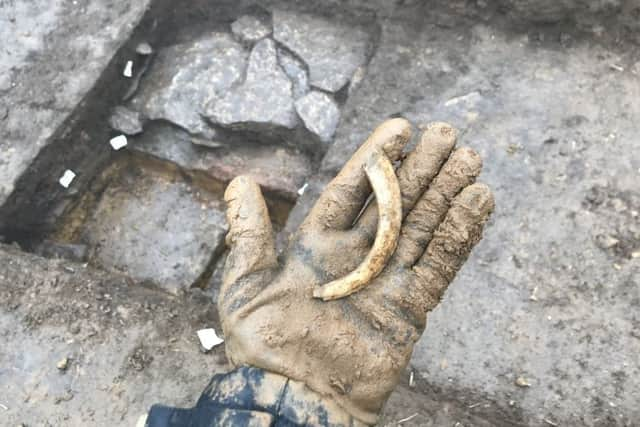Broughton dig reveals a wealth of ancient items
and live on Freeview channel 276
A European specialist in heating engineering, he recognised the broken slab as part of a hypocaust tile - one used to take hot pipes up walls in high-status Roman buildings.
It was then he knew that whatever ruins lay beneath the soil were of unimaginable quality and significance.
Advertisement
Hide AdAdvertisement
Hide AdDuring the subsequent trial dig, 178 items of significance were found, cleaned and catalogued.


Among them were coins, one bearing the mythological twins Romulus and Remus, a coin made into a pendant, high-status ‘samian-ware’ - the bone china of its day - (one piece decorated with an etching of a hare), a sherd of a flagon and tiles made to a roofing method still used today.
One of the most fascinating finds was a very large tusk from a wild boar.
“It is an extraordinarily large tusk and it might mean that hunting would have been an important part of the activity at this villa. We need to study this because the tusk is so large.
Advertisement
Hide AdAdvertisement
Hide Ad“There is so much for us to learn about what the villa was being used for. It may be that Roman dignitaries visited for the sport. It’s something that needs to be looked at in the coming years.”


Mr Westcott said the magnotometry indicates various possibilities in areas in and around the villa, including even a smelting works.
Mr Westcott also found a very large key on the site and tests are being done to find out whether this goes back to that Roman era.
He said excavation of the site would take ‘years and years’ and if done commercially could cost £2 million or more.If a university took on the project at Broughton its archeology students could also benefit from other Bronze Age and Iron Age features on the estate.
Advertisement
Hide AdAdvertisement
Hide Ad“All other sites of this significance - with the exception of North Leigh near Witney - have a visitor centre and/or museum,” he said.


To reads Keith’s first hand account of the historic find click here.
To read more about the significance of the ruins click here.
For the decades long story that lead to the villa’s unearthing click here.